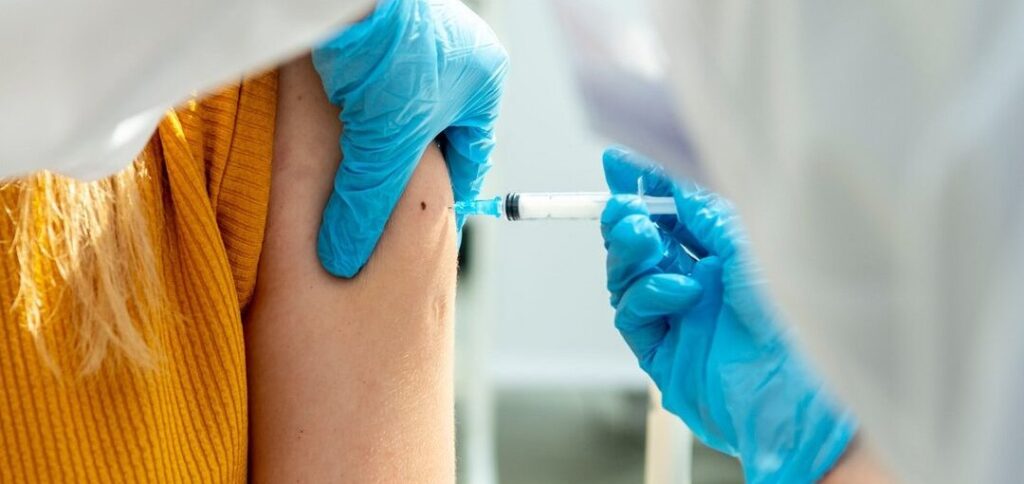In mid-September, the Centers for Disease Control and Prevention (CDC) issued a press release recommending “everyone 6 months and older get an updated COVID-19 vaccine to protect against the potentially serious outcomes of COVID-19 illness this fall and winter.”
Suffice to say, the CDC’s recommendation has fallen on deaf ears. To date, only 7 percent of U.S. adults and 2 percent of children have followed the CDC’s suggestion. In fact, the rate of Americans receiving the latest COVID-19 booster is so low that Dr. Camille Kotton of Harvard Medical School said the situation is “abysmal.”
Nevertheless, CDC Director Mandy Cohen remains unphased, recently telling Politico, “I think we’re on track. Would I love to see more? Of course, that’s my job as CDC director is to want more.”
Actually, Cohen’s job is to protect the health and wellness of the American people; not the bottom line of Pfizer and Moderna.
The American people are obviously skeptical about receiving yet another COVID-19 booster, which makes sense given the doublespeak, disturbing side effects, and lack of efficacy regarding the vaccine and boosters over the past few years.
To begin with, the CDC lost credibility when it changed the definition of “vaccine” and “vaccination” on its website a few months after the initial rollout.
Before September 1, 2021, the CDC defined “vaccine” as: “A product that stimulates a person’s immune system to produce immunity to a specific disease, protecting the person from that disease.” However, the CDC now defines “vaccine” as: “A preparation that is used to stimulate the body’s immune response against diseases.”
The CDC played semantics with the definition of “vaccination” as well, changing the definition from, “The act of introducing a vaccine into the body to produce immunity to a specific disease” to, “The act of introducing a vaccine into the body to produce protection from a specific disease.”
“Immunity” and “protection” are not synonyms; they have different meanings.
It is also more than likely that most Americans have trepidation regarding the latest booster shot based on the fact that there have been several side effects linked to the initial round of shots and subsequent boosters.
In 2022, the University of Arizona Mel and Enid Zuckerman College of Public Health released a study titled “Understanding low bivalent COVID-19 booster uptake among US adults,” which found that 31.5 percent of respondents said they chose not to receive a booster due to concerns about vaccine side effects and 23.4 percent cited concern about booster safety.
These concerns are warranted, considering the CDC acknowledges that myocarditis (inflammation of the heart muscle) and pericarditis (inflammation of the outer lining of the heart) have been linked to “adolescents and young adult males within several days after mRNA COVID-19 vaccination.”
In early 2023, the National Institutes of Health (NIH) released a study that found, “Various cases of thrombosis have been reported as adverse reactions after vaccination with COVID-19 vaccines.” The NIH study also found “a significant increase in the incidence rate” of “pulmonary embolism following vaccination.”
Worse yet, the Vaccine Adverse Effect Reporting System (VAERS) reported 4,812 deaths, 4,996 permanent disabilities, and 21,440 hospitalizations from COVID-19 vaccines as of June 25, 2021.
As most Americans are well aware, the federal government even went so far as to grant a blanket liability shield for the makers of the COVID-19 vaccines under the Public Readiness and Emergency Preparedness Act of 2020.
What’s more, why would Americans take an experimental vaccine that has been shown to produce adverse side effects when the so-called vaccines do not prevent them from getting or transmitting COVID-19?
There are countless examples of high-ranking government officials, such as Dr. Anthony Fauci, who have received numerous boosters yet still became infected with COVID-19. Moreover, studies show that the original COVID-19 shot and the multiple boosters that have been rolled out over the past three years “decline in effectiveness” shortly after they are administered.
And, considering the fact that COVID-19 poses little to no threat among the young and healthy, why in the world would the CDC promote an experimental vaccine for infants?
The good news is that Americans are continuing to get vaccines for diseases such as measles, mumps, the flu, and other preventable illnesses. This shows that there is not a general distaste for vaccines as a whole among the American population. However, given the shoddy track record of a set of vaccines that do not meet the classical definition of vaccine, produce dire side effects, and do not even work as intended, it makes perfect sense that only a sliver of the population is willing to keep getting boosted.
Photo by Mos.ru. Creative Commons Attribution 4.0 International.
The Climate Change Weekly Newsletter has been moved to HeartlandDailyNews.com. Please check there for future updates!





